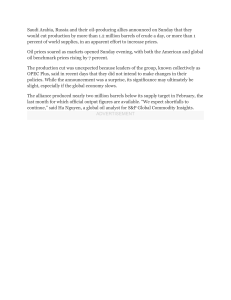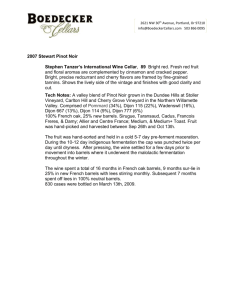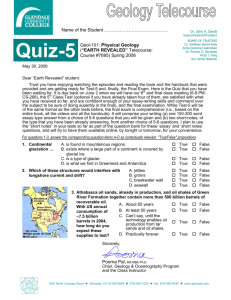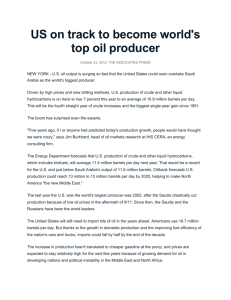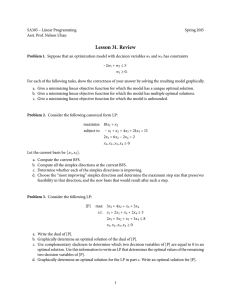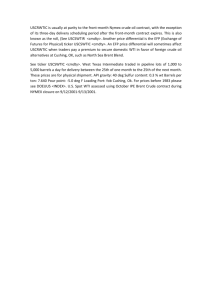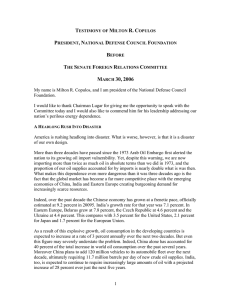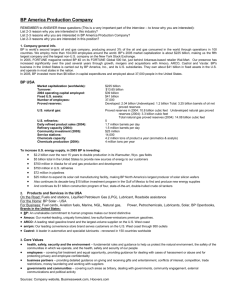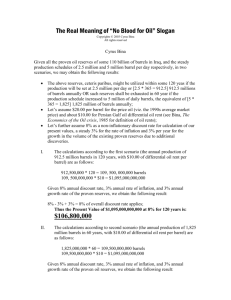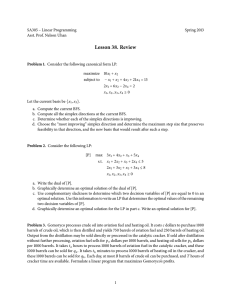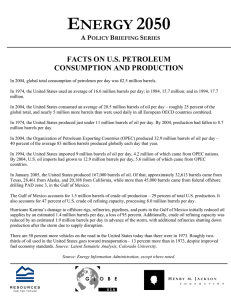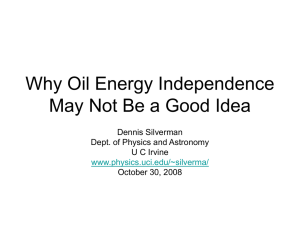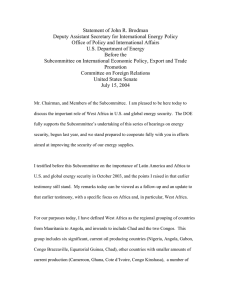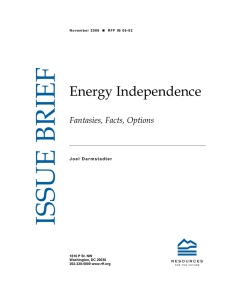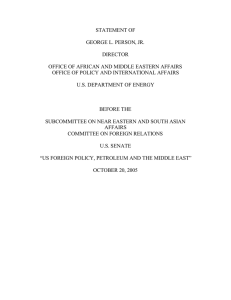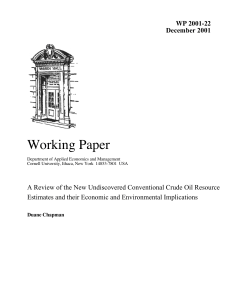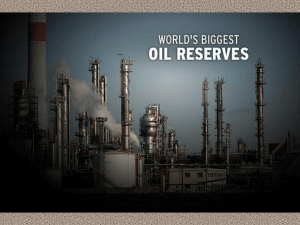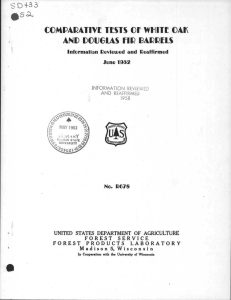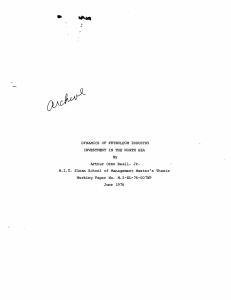Document
advertisement
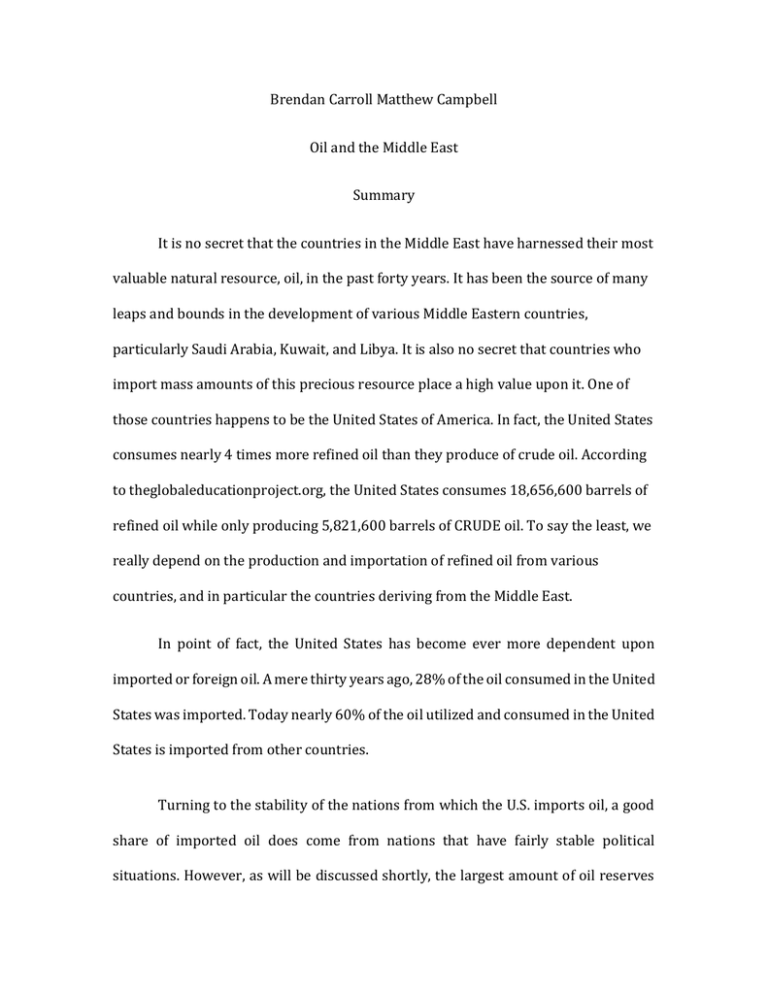
Brendan Carroll Matthew Campbell Oil and the Middle East Summary It is no secret that the countries in the Middle East have harnessed their most valuable natural resource, oil, in the past forty years. It has been the source of many leaps and bounds in the development of various Middle Eastern countries, particularly Saudi Arabia, Kuwait, and Libya. It is also no secret that countries who import mass amounts of this precious resource place a high value upon it. One of those countries happens to be the United States of America. In fact, the United States consumes nearly 4 times more refined oil than they produce of crude oil. According to theglobaleducationproject.org, the United States consumes 18,656,600 barrels of refined oil while only producing 5,821,600 barrels of CRUDE oil. To say the least, we really depend on the production and importation of refined oil from various countries, and in particular the countries deriving from the Middle East. In point of fact, the United States has become ever more dependent upon imported or foreign oil. A mere thirty years ago, 28% of the oil consumed in the United States was imported. Today nearly 60% of the oil utilized and consumed in the United States is imported from other countries. Turning to the stability of the nations from which the U.S. imports oil, a good share of imported oil does come from nations that have fairly stable political situations. However, as will be discussed shortly, the largest amount of oil reserves are located in the Middle East -- one of the most volatile regions of the world. Most people are surprised to learn that the country from which the United States imports the greatest amount of oil is Canada. In recent years, the United States has imported approximately 200 million barrels of crude oil annually from Canada. Oil imports into the United States from Saudi Arabia come in at second place with about 160 million barrels of crude oil annually from the Kingdom. The United States imports about the same amount of oil from Mexico as it does from Saudi Arabia on an annual basis. Other countries from which the United States imports oil are: Venezuela, Nigeria, Iraq, the United Kingdom, Norway, Angola, Algeria and Colombia. Of course, oil is a limited resource. The bulk of proven, remaining oil reserves in the world today are located in the Middle East. In the Middle East there are an estimated 727 billion barrels of oil in reserve. The amount of oil in the Middle East far outstrips what is available anywhere else on Earth. For example, the known reserves in Central and South America are an estimated 99 billion barrels, in Africa an estimated 87 billion barrels, in the nations of the former Soviet Union an estimated 78 billion barrels and in Western Europe and China there is an estimated 18 billion barrels in each location. Rounding out the list is Mexico with an estimated 16 billion barrels of oil in reserve and India with an estimated 5 billion barrels of oil in reserve. Oil, coal and natural gas account for more than 85% of the energy consumed in the United States at this point in time. Oil accounts for nearly 40% of all energy utilized in the United States in this day and age. So we turn our attention towards the long term thought process of the U.S government, why do we care about the political stability of the Middle Eastern countries? We care because we know oil is a finite resource. With an unstable government at the helm, we could see extremely volatile oil prices or even a major decline in oil production, thus having an impact on our own economy, which could affect the global economy as a whole given our economic size!
